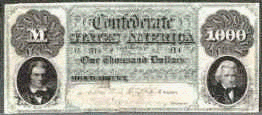

 Collectors
Corner
Collectors
Corner 

PATTERN COINS
A pattern coin is a prototype which, for one reason or
another, never became a circulation coin. Perhaps the design was unacceptable. Sometimes
a new metal is experimented with and rejected. One pattern, the Stella, was made
from aluminum. Although often used in European minor coins, aluminum corrodes and
wears rapidly, and, in humid climates, swells up after a few years.
Had our new
"sandwich" coins been rejected, the hundred or more that might have been
produced would be considered patterns. Incidentally, the prototypes did not carry
the designs of our present coinage. It is against the law to strike regular designs.on
metallic experimental pieces. The experimental quarters showed Martha Washington
on the obverse and Mount Vernon on the reverse. All trial coins are supposed to be
remelted. One pattern-later-turned-circulation coin is the flying eagle cent. About
1000 dated 1856 were produced before the Act of February 21, 1857, made them official
coinage. The 1856 is thus considered a pattern.
Despite the fact that patterns
were sometimes sold by the Mint, there were several instances when they were considered
counterfeit and the Government threatened to confiscate them. Fortunately the threat
was never carried out, and collections of this fascinating phase of our country's
coinage remain.
COLONIAL COINS
Even before the United States Mint began in 1796, the
Thirteen Colonies were minting coins. They were meant to take the place of wampum,
the Indian money consisting of strings of beads, as well as the beaver skins, tobacco,
and bartering that served as mediums of exchange.
Foreign settlers, of course,
brought their own money and it was accepted in the new country. England ignored the
Colonies' problem and did not bother to mint coins especially for them. Spanish money,
especially the dollar, was accepted in this country until as late as 1857. One facet
of Spanish coinage remains to this day: the Spanish real was a coin worth one-eighth
of a dollar, or 12½, cents. The real was colloquially called a Sit, and two bits equaled
25 cents. The term remained in our vocabulary.
The first coinage struck exclusively
for the Colonies was called "Hogge Money." It was so named because of the
hog (spelling was not a strong point in those days) depicted on the obverse. It circulated
in the Bermuda Islands, then known as Sommer Islands after Sir George Somers. Shipwrecked
on the island, Somers and his men feasted on the wild hogs that overran it.
The
first coin struck on the continent and in the English Americas was from a mint just
outside Boston. Its design was simplicity itself: the obverse had the letters NE
(for New England) in one corner. The reverse had the Roman numerals III, VI, or XII,
denoting threepence, sixpence, or one shilling. (A shilling was equal to 12 pennies,
or pence.) The Articles of Confederation, adopted July 9, 1778, gave to the Congress
the sole right to regulate the content and value of coinage struck by its own authority
or by the states. New Hampshire was the first state to produce its own coinage.
Before then, many coins and tokens showing the likeness of George Washington had
been produced. However, he did not like the idea of his portrait appearing on coins
and neither did the Congress, which considered the practice monarchistic. Not until
1900 was Washington so honored.
The first coins authorized by the United States
of America (but not made by our Mint) were the Fugio cents. The obverse carried the
legend "FUGIO," meaning "time flies." The reverse showed
thirteen circles linked together and carried the legend "MIND YOUR OWN BUSINESS,"
a Ben Franklinism that has resulted in this coin's being known as the Franklin
cent. All coins are dated 1787, their year of origin. The first issues from the United
States Mint were the half disme and disme (pronounced dime). Also produced at the
time but extremely rare and, in some instances, unique are the 1792 silver cent,
Birch cent, and the pattern half eagle,
The rarity of many coins makes Colonials
draw traffic wherever they are exhibited. Unfortunately, it is this rarity that has
driven them out of range of the average collector's budget. Those seeking the unusual
should seriously consider Colonial coinage

 Related
Topics
Related
Topics

www.diskworks.com

3-13-1998
Page Design by Sleepy
sleepy@diskworks.com
Copyright © 1997-2001, collectorscorner.org
All Rights Reserved.....